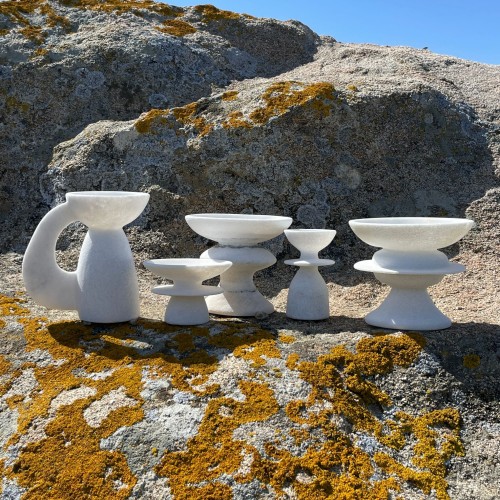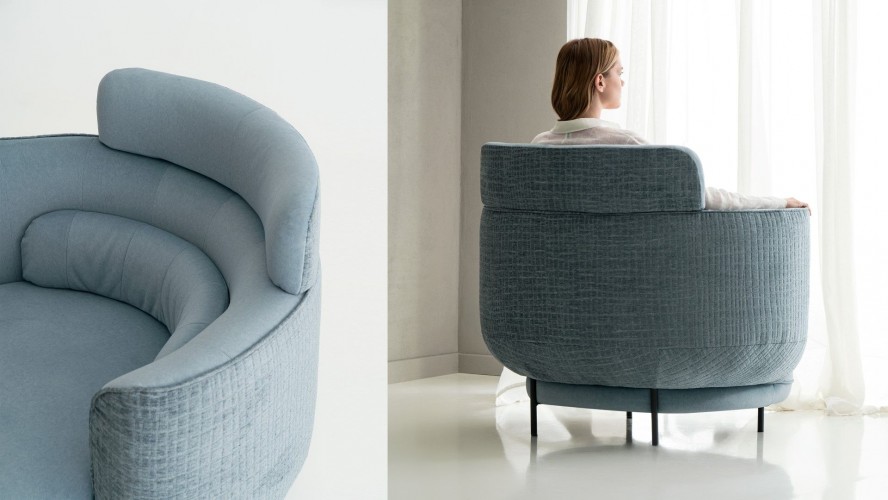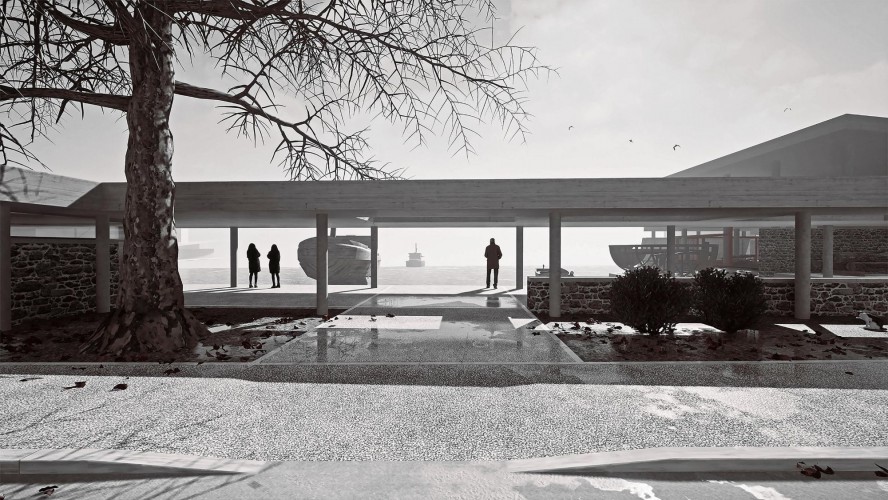Συνέντευξη με τους doxiadis+ με αφορμή το νέο τους project ‘Fungality’
DS.WRITER:
Tasos Giannakopoulos
Κεντρική Εικόνα: Τρυβλίο με καλλιέργεια Aspergillus spp., στο οποίο έχουν παρεισφρήσει μύκητες από το περιβάλλον | Ευγενική παραχώρηση του γραφείου doxiadis+
Το γραφείο αρχιτεκτονικής και αρχιτεκτονικής τοπίου doxiadis+ ιδρύθηκε το 1999 από τον Θωμά Δοξιάδη, και έκτοτε έχει μελετήσει και υλοποιήσει πληθώρα έργων ποικίλων τυπολογιών, με κοινό άξονα τον σεβασμό και τη συμβίωση. Με μία μεγάλη ομάδα αρχιτεκτόνων, αρχιτεκτόνων τοπίου, γεωπόνων και σχεδιαστών, το γραφείο καταπιάνεται με έργα τα οποία εκτείνονται από την αρχιτεκτονική και το τοπίο έως το master planning, τη μελέτη περιβαλλοντικών πολιτικών έως και την οικολογία, ακόμα και με τους μύκητες. Οι τελευταίοι είναι οι εκκεντρικοί πρωταγωνιστές που κέρδισαν το ενδιαφέρον μας και για τους οποίους θα μας μιλήσουν οι doxiadis+.
Αρχικά, θα θέλατε να μας πείτε δυο λόγια για το γραφείο doxiadis+;
Το doxiadis+ είναι μια καινοτόμα ομάδα ειδικών, που δημιουργούν τοπία και αρχιτεκτονική με έναν βαθύ σεβασμό στους ανθρώπους και στη φύση. Από την ίδρυση του γραφείου, η δημιουργία Συμβίωσης έχει γίνει ο κύριος στόχος μας και η βασική μας φιλοσοφία. Μας κατευθύνει μια συνεχής αίσθηση ενθουσιασμού και σεβασμού για τις ιδιαίτερες σχέσεις ανάμεσα στους ζωντανούς οργανισμούς. Κατανοώντας αυτές τις συνδέσεις, προσπαθούμε να δημιουργήσουμε όμορφους χώρους στους οποίους οι άνθρωποι θα μπορέσουν να ευδοκιμήσουν μέσα στο περιβάλλον τους. Η αγάπη και ο σεβασμός μας για την ποικιλομορφία και τις συμβιωτικές σχέσεις αντανακλώνται όχι μόνο στα έργα μας, αλλά και στην εκτεταμένη έρευνα που έχουμε πραγματοποιήσει μέσα στα χρόνια. Αυτή καλύπτει μια μεγάλη γκάμα από θέματα, όπως πειραματικές φυτεύσεις άνυδρων κήπων στις Κυκλάδες, μελέτες για την κλιματική αλλαγή και το μέλλον των μεσογειακών δασών, παρεμβάσεις στον δημόσιο χώρο με στόχο την επανάχρηση υλικών και την ανακύκλωση (reduce-reuse-recycle).
Στα τελευταία σας project έχετε αρχίσει να ασχολείστε με κάτι αρκετά αναπάντεχο και φρέσκο• τους μύκητες. Πώς προέκυψε αυτή η ενασχόληση;
Η ενασχόληση με το βασίλειο των μυκήτων ξεκίνησε τη στιγμή που λάβαμε πρόσκληση να συμμετάσχουμε στη 17η Biennale Αρχιτεκτονικής. Εμπνεόμενοι από την ερώτηση “Πώς θα ζήσουμε μαζί”, ξέραμε πως έπρεπε να δημιουργήσουμε ένα project σχετικά με συμβιωτικές σχέσεις και να τονίσουμε τη σημασία τους. Αυτή η πρόκληση οδήγησε στον σχεδιασμό και την καλλιέργεια ενός μικρού κήπου από μύκητες.
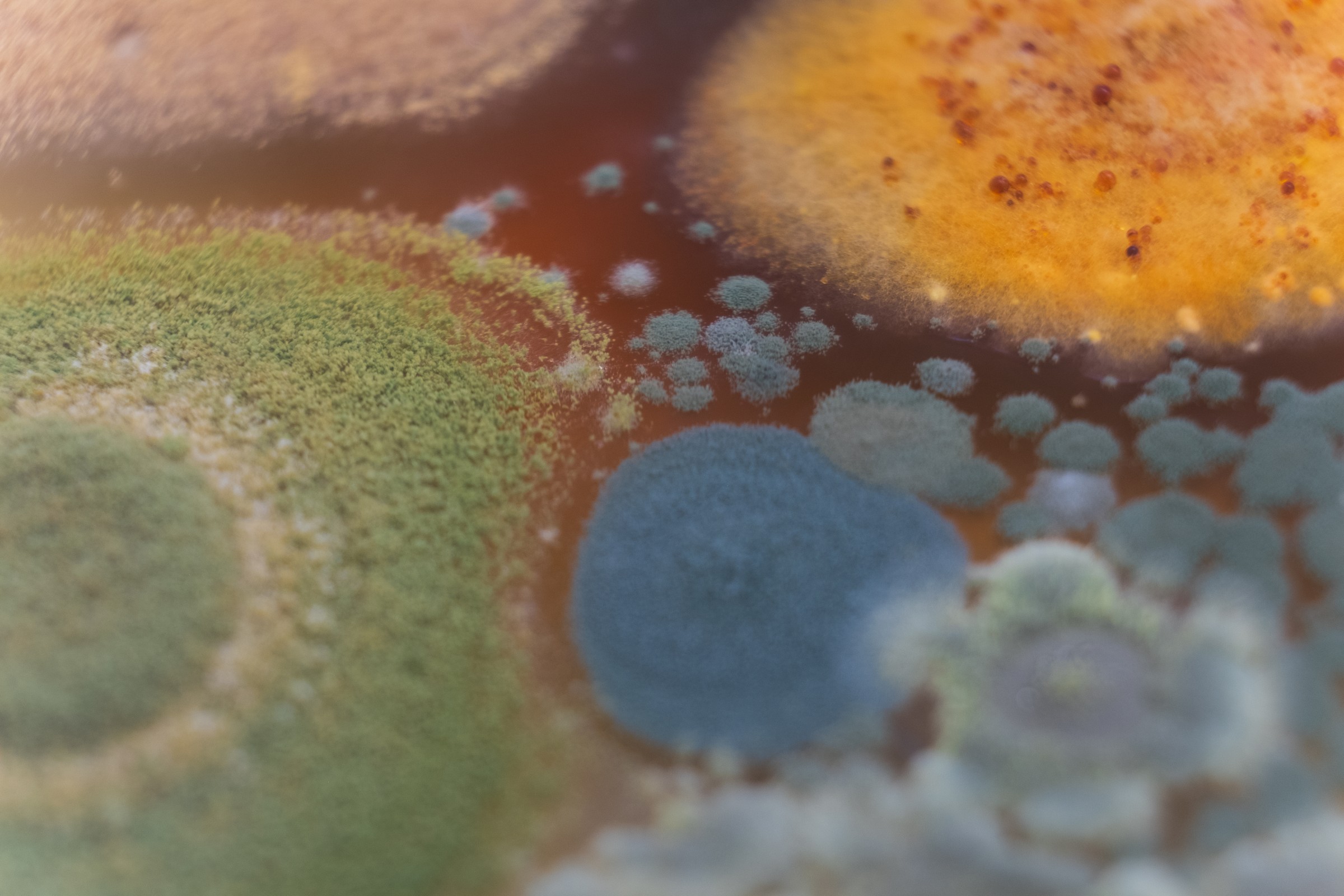
Πειραματικός σχεδιασμός με μύκητες / Ευγενική παραχώρηση του γραφείου doxiadis+
Ο κόσμος και η σχέση της ανθρωπότητας με τη φύση λειτουργούν ως ένα καλά αναμειγμένο όλο. Αυτό το όλο αποτελείται από ιστούς με αμοιβαίες περιπλέξεις ανάμεσα στα βασίλεια της ζωής που συνεχώς μεταβάλλονται. Είμαστε ζωντανοί μονάχα εξαιτίας του πλέγματος της ζωής στη γη, και της διακριτικής και συνεχούς ανταλλαγής ανάμεσα στους ζωντανούς οργανισμούς. Η κατανόηση αυτού προσφέρει μια εντελώς νέα, εξαιρετική ματιά του κόσμου και αλλάζει την προοπτική μας και το πλαίσιο σκέψης μας.
Παίρνοντας το παραπάνω ως αφετηρία, αρχίσαμε να μελετούμε τον τρόπο με τον οποίο επικοινωνούν τα δένδρα, καθώς και τη σχέση τους με τα μανιτάρια και κατ’ επέκταση το μυκήλιο, κάτι που ύστερα από αρκετές ώρες αναζήτησης και brainstorming οδήγησε στο ευρύτερο βασίλειο των μυκήτων. Προσεγγίσαμε αυτό το έργο με ό,τι βρήκαμε on site, δηλαδή τους μύκητες που υπήρχαν στο δωμάτιο στο οποίο εργαστήκαμε και παρουσιάσαμε το έργο μας, και αυτό αντανακλά τον τρόπο που λειτουργούμε γενικώς ως γραφείο. Κάθε έργο είναι μοναδικό. Αφορά ένα συγκεκριμένο τοπίο και το συγκείμενό του. Μελετούμε, ανακαλύπτουμε και κατανοούμε τη ζωή, τα στοιχεία και τις διαδικασίες που εκτυλίσσονται σε κάθε τοπίο, με στόχο τον σεβασμό και την ανάδειξή του.
Αλλά, γιατί μύκητες τελικά;
Οι μύκητες είναι οι κρυφοί ήρωες αυτού του δικτύου της ζωής και αποτελούν το βασίλειο ανάμεσα από τα φυτά και τα ζώα. Οι μύκητες είναι δημιουργοί ζωής, διευκολυντές και αποσυνθέτες. Είναι ανθεκτικοί σαν μια πέτρα και μετατρέπουν τις πέτρες σε ζωή μέσω της εδαφογένεσης. Δημιουργούν δίκτυα μυκηλίου ενώνοντας δέντρα και φυτά μέσω μυκορριζών. Είναι οι ανακυκλωτές της φύσης, μεταβολίζοντας την οργανική ύλη που αποσυντίθεται ώστε να την επαναφέρουν στον βιολογικό κύκλο. Χωρίς αυτούς, η ζωή στη Γη όπως την ξέρουμε δεν μπορεί να υπάρξει. Και είναι απλά παντού, αν και σχεδόν κανείς δεν τους προσέχει.
Είναι οι ήρωες του δικτύου της ζωής, και είναι ακριβώς αυτό το μήνυμα που θεωρούμε ζωτικό και αναγκαίο να κατανοηθεί από τον καθένα από εμάς. Πιστεύουμε πως δίχως αλληλεπιδράσεις και συμβιωτικές σχέσεις, το μέλλον μας θα είναι αμφίβολο.
Παρατηρήσαμε αυτούς τους μύκητες, και ιδιαίτερα το μυκήλιο έχει μελετηθεί σε προηγμένες μελέτες μηχανικής για τις αμέτρητες πιθανότητες εφαρμογής στα πεδία της παραγωγής, της συσκευασίας και της κατασκευής, και πιστεύουμε πως είναι το “υλικό του μέλλοντος”.
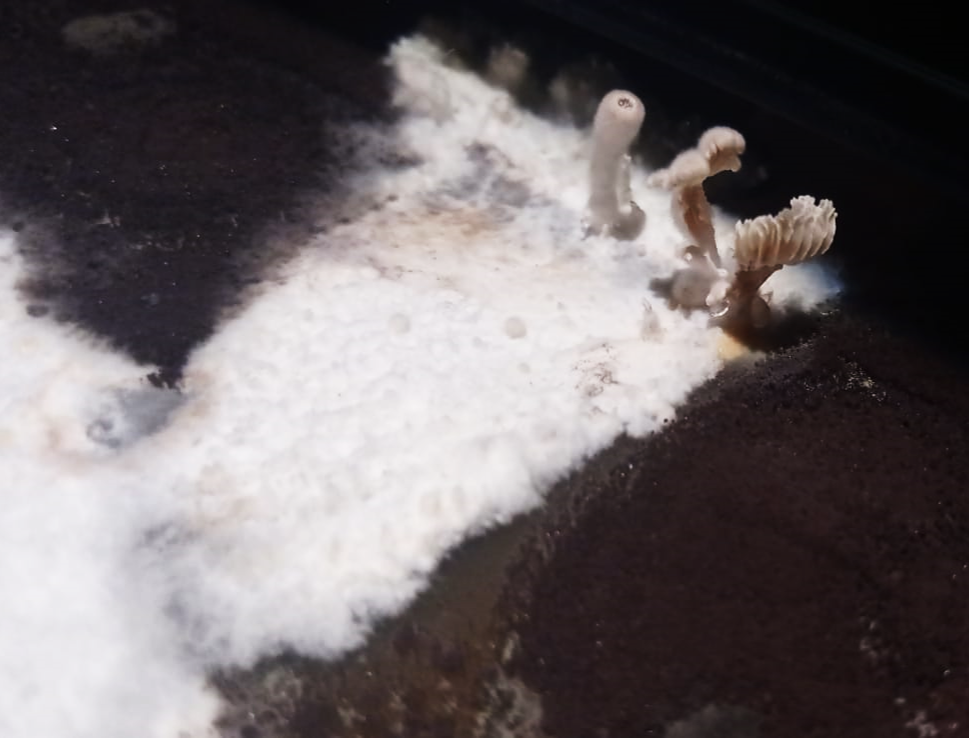
Μυκήλιο και μανιτάρι Schizophyllum commune που αναπτύχθηκε σε τρυβλίο της ομάδας / Ευγενική παραχώρηση του γραφείου doxiadis
Πώς ξεκίνησε, λοιπόν, το έργο σας ‘Fungality’;
Αφού παρουσιάσαμε το ‘Entangled Kingdoms’ στη 17η Biennale Αρχιτεκτονικής, επικοινώνησε μαζί μας η Soundwalk collective, μια αξιοσημείωτη ομάδα καλλιτεχνών, για να συνεργαστούμε σε μια νέα έκθεση στη Ρώμη της Ιταλίας. Αυτό ήταν το σημείο εκκίνησης του Fungality, που παρουσιάστηκε στο Fofof Roma τον Φεβρουάριο του 2022. Σε αυτή την έκθεση εξερευνήσαμε τη «σεξουαλικότητα» των μυκήτων και πώς αυτή συνδέεται με την εξέλιξη της σεξουαλικότητας όπως εμείς τη γνωρίζουμε, αλλά κυρίως πώς μπορεί να μας βοηθήσει να φανταστούμε το μέλλον της σεξουαλικότητας.
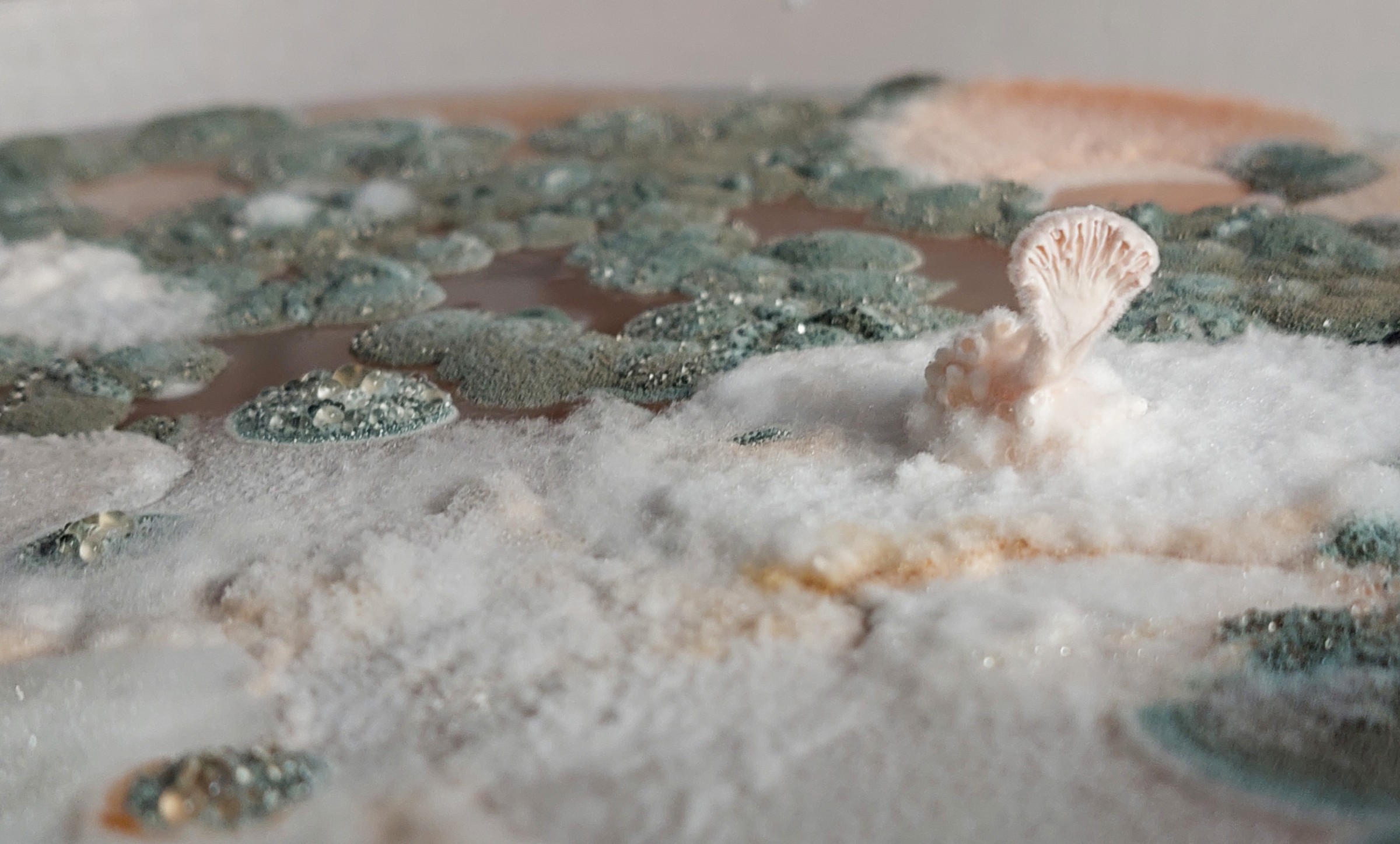
Τρυβλίο με καλλιέργεια Schizophyllum commune, στο οποίο έχουν παρεισφρήσει μύκητες από το περιβάλλον, δημιουργώντας το δικό του, δυναμικό μικροτοπίο. Ο συγκεκριμένος μύκητας είναι διάσημος για τις χιλιάδες «σεξουαλικές ταυτότητες» που παρουσιάζει. / Ευγενική παραχώρηση του γραφείου doxiadis+.
Τα τρυβλία στην έκθεση του Forof | Ευγενική παραχώρηση του Forof, doxiadis+
Τα τρυβλία στην έκθεση του Forof | Ευγενική παραχώρηση του Forof, doxiadis+
Τι είναι, δηλαδή, το ‘Fungality’;
Το Fungality είναι μια ανασκόπηση της σεξουαλικής εξέλιξης από τους μύκητες στα robot. Αυτή η δουλειά είναι μια μελέτη in vitro της ανάπτυξης των μυκήτων και της αναπαραγωγής τους, όπως απεικονίζεται σε δοκιμαστικά πιατίδια σμιλεμένα από cnc, τοποθετημένα σε μια ακρυλική βάση ενός ερειπίου και σκαναρισμένα τρισδιάστατα.
Το ‘Fungality’ είναι ένα παρατηρητήριο αποικίας μυκήτων, ένας από τους παλαιότερους σχηματισμούς ζωής. Πέντε καλλιέργειες από μύκητες αναδύονται από μια αόρατη βάση, που είναι τοποθετημένη στα αρχαία ερείπια του Palazzo Roccagiovine. Η κατανόηση αυτών των περίπλοκων οργανισμών ανοίγει νέα παράθυρα στους τρόπους που καταλαβαίνουμε και αντιλαμβανόμαστε τη ζωή, τις βιολογικές διεργασίες και την εξελικτική διαδικασία άλλων οργανισμών.
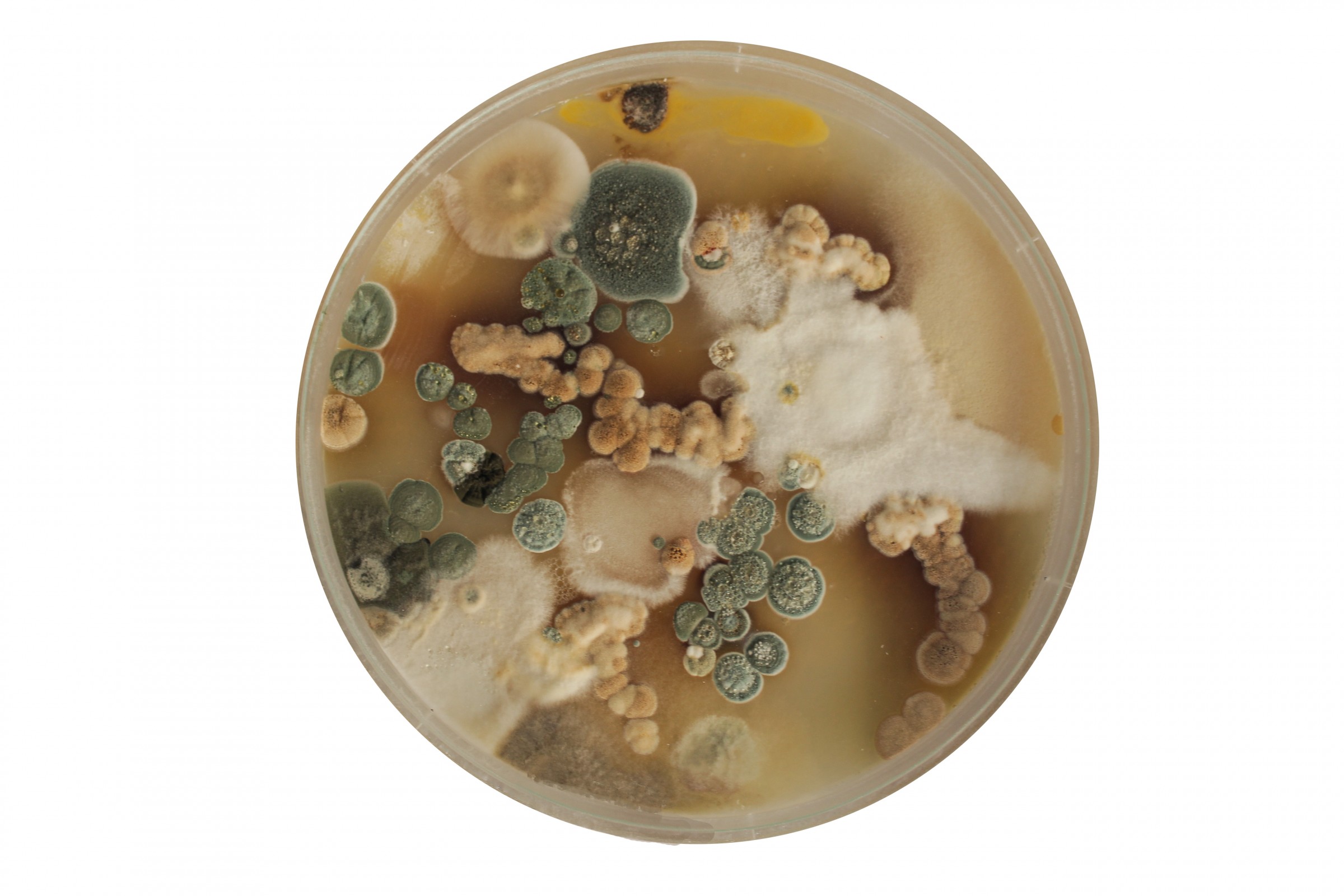
Τρυβλίο με Καλλιέργεια Aspergillus spp., στο οποίο έχουν παρεισφρήσει μύκητες από το περιβάλλον / Ευγενική παραχώρηση του γραφείου doxiadis+
Οι αναπτυσσόμενοι μύκητες εξελίσσουν ποικιλόμορφες αναπαραγωγικές διαδικασίες: ασεξουαλικές, σεξουαλικές, παρασεξουαλικές. Η ανάπτυξη κάθε μύκητα ποικίλλει, και η αντίδρασή τους εξαρτάται από τις συνθήκες του εκθεσιακού χώρου. Αν και αρχικά οι μύκητες μοιάζουν απλές μορφές ζωής, έχουν μεγάλη ποικιλία και συνήθως έχουν και περίπλοκα αναπαραγωγικά συστήματα, δυναμικούς μεταβολισμούς, προσαρμοστικότητα και συμπεριφορικές στρατηγικές. Όλα τα παραπάνω τονίζουν την τεράστια σημασία που έχουν στον σχηματισμό της ζωής και στη συντήρησή του.
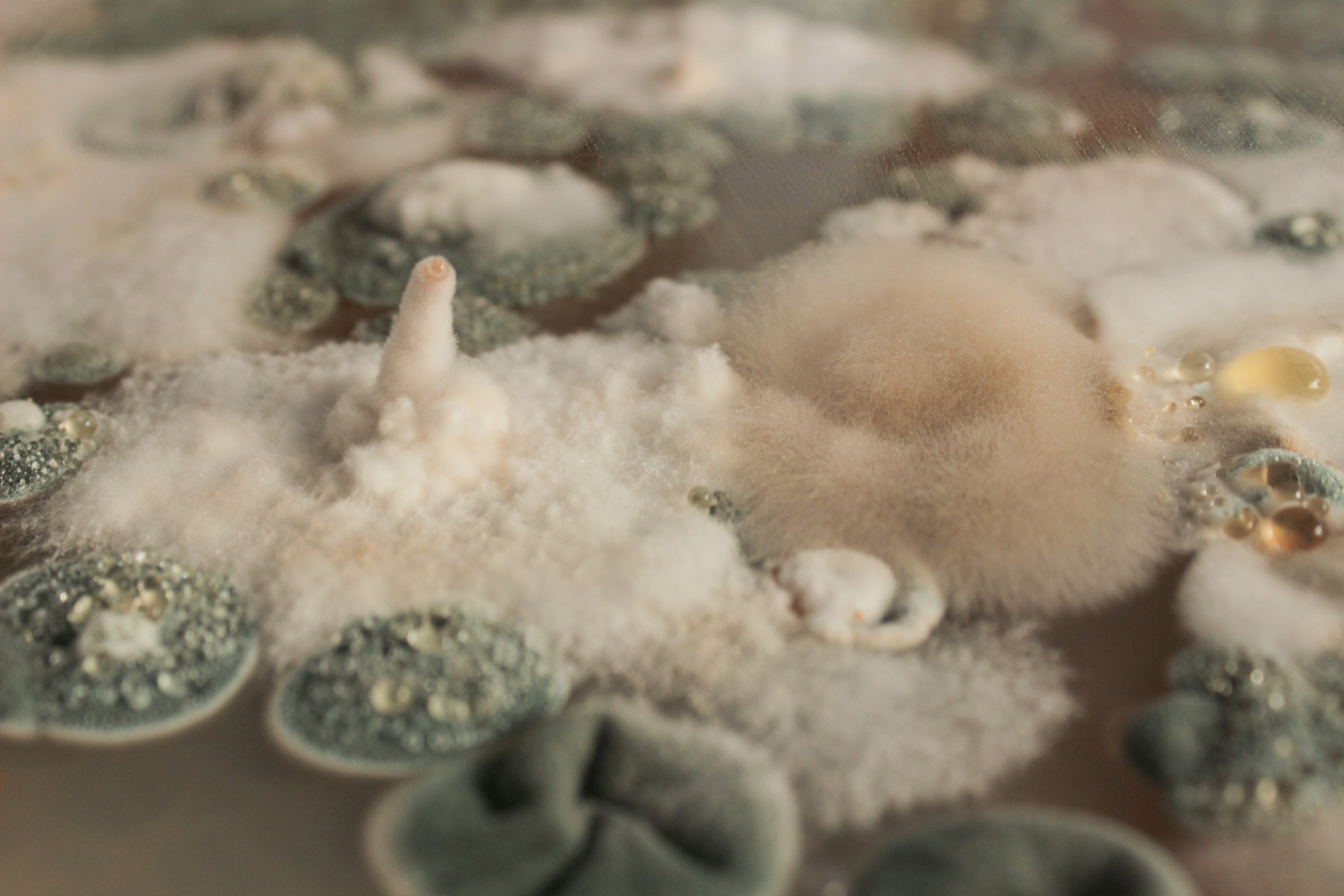
Τρυβλίο με καλλιέργεια Schizophyllum commune / Ευγενική παραχώρηση του γραφείου doxiadis+
Πώς συνδυάζεται αυτό το έργο με τις σχεδιαστικές ασχολίες σας;
Οι μύκητες είναι ένας ολοκαίνουριος κόσμος για εμάς. Προκειμένου να σχεδιάσουμε τον κήπο των μυκήτων, εφαρμόσαμε τις ίδιες σχεδιαστικές αρχές που χρησιμοποιούμε στον σχεδιασμό τοπίου. Το ενδιαφέρον κομμάτι στην περίπτωση των μυκήτων, είναι πως δεν μπορούμε να ελέγξουμε τη συμπεριφορά τους ή συγκεκριμένα να τις σχεδιάσουμε, περισσότερο προβλέπουμε και παρατηρούμε. Αυτή η μίξη σχεδιασμένης τυχαιότητας είναι αυτό που μας συναρπάζει στον κόσμο των μυκήτων.
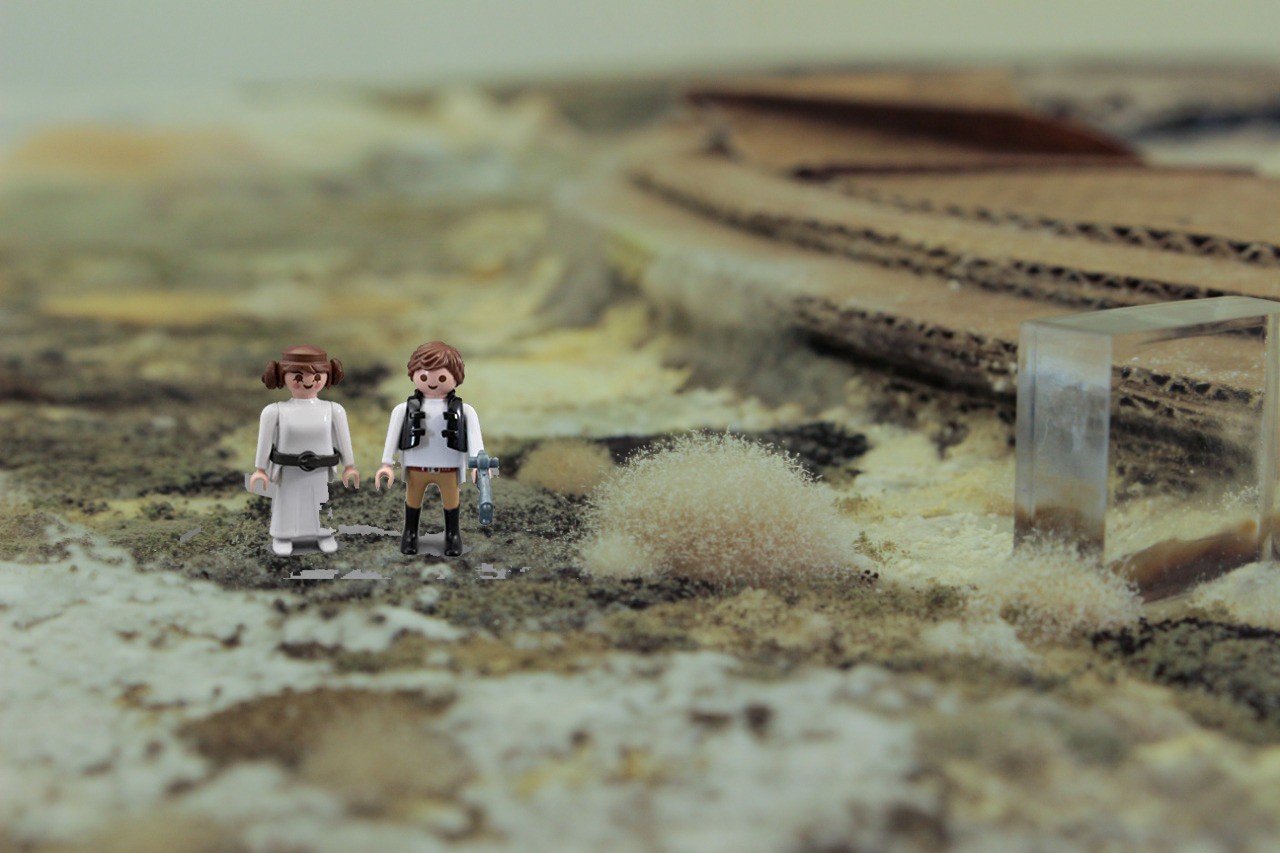
Πείραμα σε custom made τρυβλίο μεγάλων διαστάσεων, με χρήση διαφορετικών υλικών και μυκήτων / Ευγενική παραχώρηση του γραφείου doxiadis+
Τι πιστεύετε για την ιδέα της αρχιτεκτονικής για πολλαπλά είδη (multispecies architecture); Θεωρείτε πως είναι πραγματικά βιώσιμο μοντέλο ή περισσότερο ένας χώρος για σκέψη πέρα από τους ανθρωποκεντρικούς περιορισμούς μιας πιο παραδοσιακής σχεδιαστικής προσέγγισης;
Ως ομάδα πιστεύουμε έντονα πως η ιδέα της multispecies architecture είναι το βιώσιμο μοντέλο για τον πλανήτη μας.
Πιστεύουμε πολύ πως ο μόνος τρόπος για την ανθρωπότητα να επιβιώσει από τις πολλαπλές κρίσεις και να ευδοκιμήσει, είναι αν σεβαστεί τις φυσικές ισορροπίες, και μαθαίνοντας από τον τρόπο που άλλα είδη λειτουργούν και αλληλεπιδρούν.
Η ιδέα της multispecies architecture μπορεί αρχικά να φαίνεται σαν μια ακόμη avant garde προσέγγιση, που μοναδικό στόχο έχει τη διεύρυνση της προοπτικής μας, ωστόσο εκφράζει και σχηματίζει με έντονο τρόπο την εποχή της. Η αρχιτεκτονική δεν μπορεί να είναι μονάχα ανθρωποκεντρική και άκαμπτη πια, πρέπει να δημιουργεί χώρους που εμπνέονται από άλλες μορφές ζωής, ενώ σέβεται και συνυπάρχει με την περιβάλλουσα φύση.
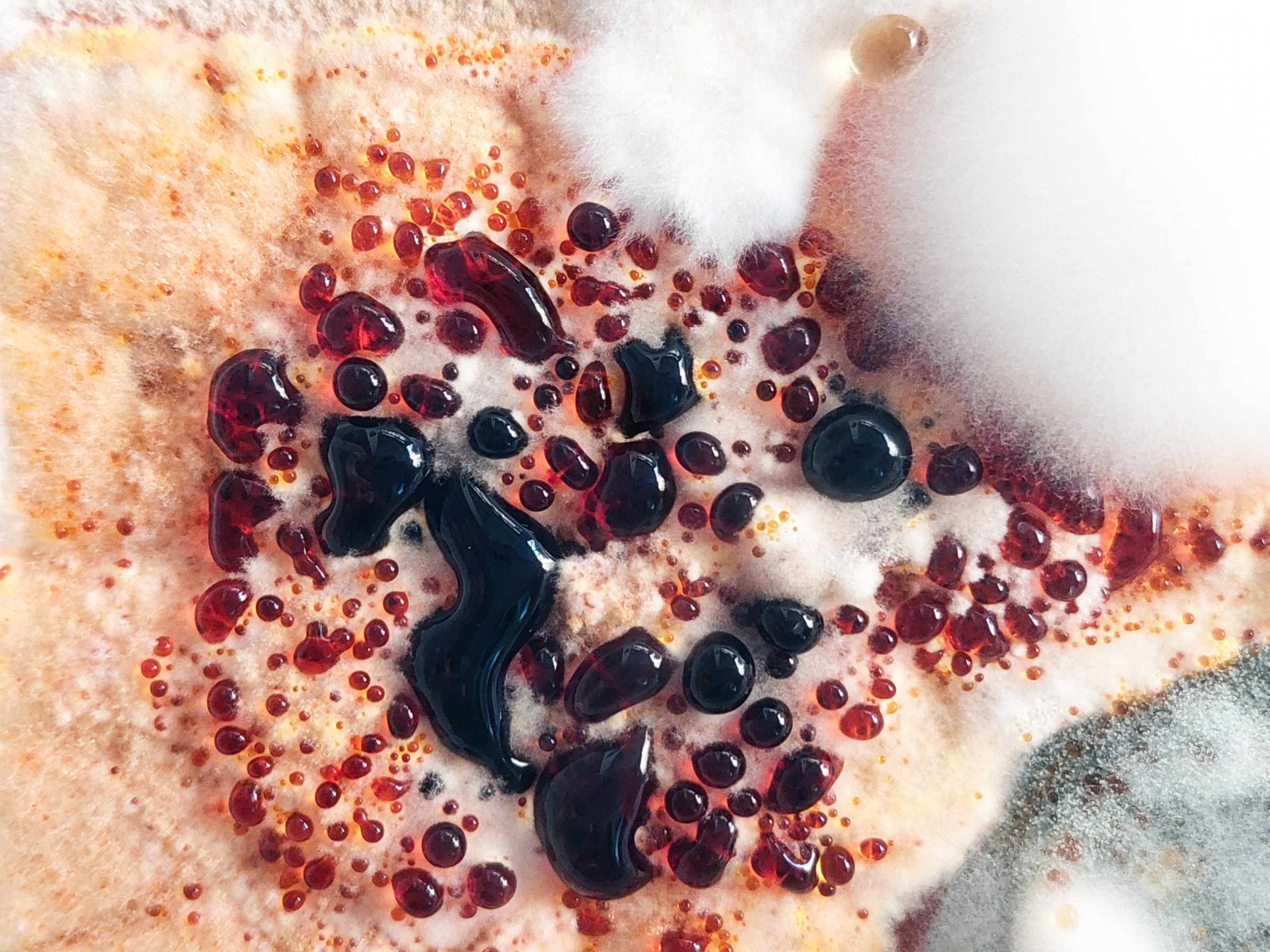
Τρυβλίο με μονοκαλλιέργεια Epicocum / Ευγενική παραχώρηση του γραφείου doxiadis+
CREDITS
Η μελέτη και η υλοποίηση του έργου δεν θα μπορούσε να ολοκληρωθεί χωρίς την πολύτιμη βοήθεια της συμβούλου μας Ζάπης Γκόνου, Επίκουρης Καθηγήτριας Συστηματικής & Οικολογίας Μυκήτων (τμήμα Βιολογίας ΕΚΠΑ), και της ομάδας Decode fab lab.
*Η συνέντευξη έχει διαμορφωθεί με στόχο το κατάλληλο μέγεθος και τη σαφήνεια.




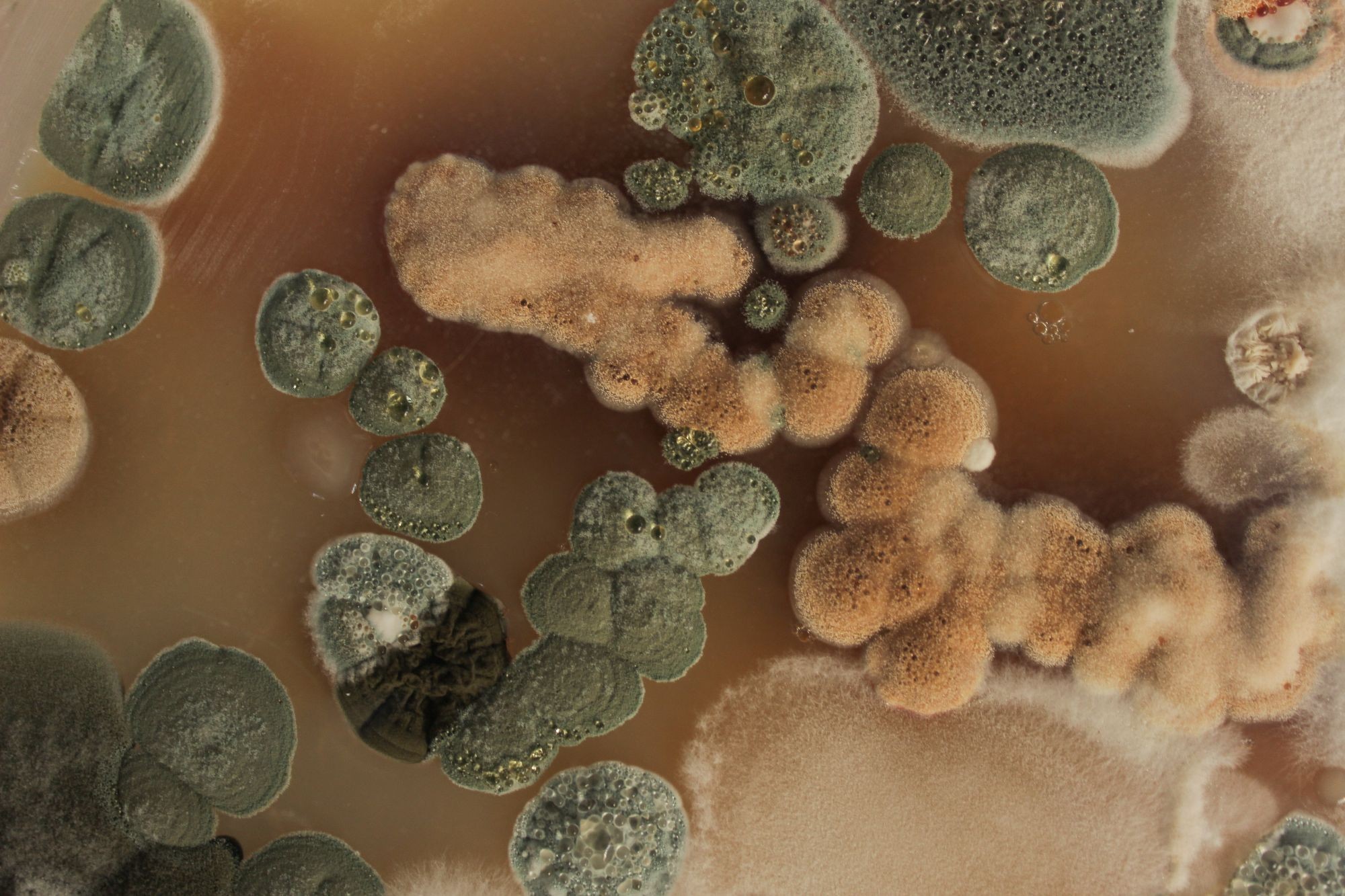
.jpg)
